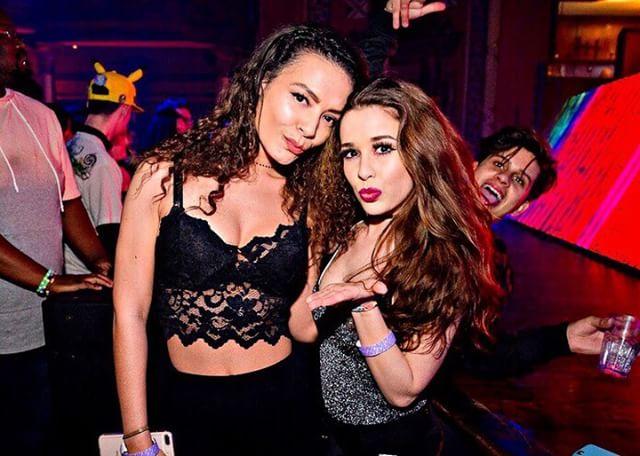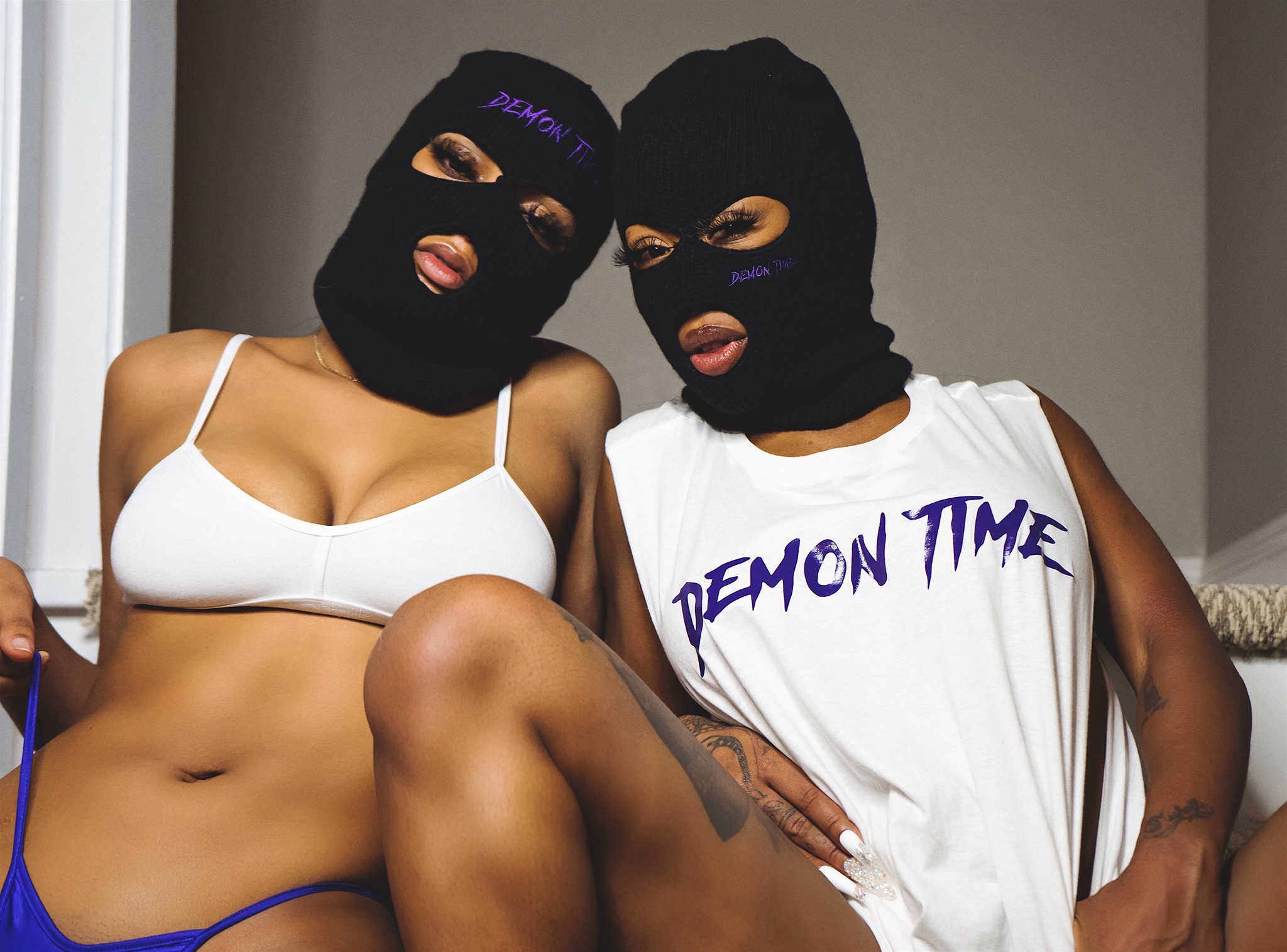In the intricate landscape of contemporary culture, the term ‘demon time’ has emerged as a captivating and controversial phenomenon, particularly among the youth. Initially rooted in the nocturnal escapades of rap music, ‘demon time’ has undergone a metamorphosis, acquiring a sexual connotation that has stirred discussions on societal norms, ethics, and media representation.
This comprehensive exploration aims to unravel the origins, controversies, and societal impact of ‘demon time’ in the context of sexuality.
The Evolution of ‘Demon Time’
To comprehend the present implications of ‘demon time,’ we must trace its origins. The term initially surfaced in rap music, where it symbolized staying up late and reveling in debauchery, recklessness, and a departure from societal norms. ‘Demon time’ served as a code for a wild and uncontrolled party atmosphere, encapsulating the essence of late-night escapades.
Over time, ‘demon time’ has evolved into a phrase that explicitly describes sexual behavior. The transformation is evident in contemporary language, where phrases like ‘Let’s get into some demon time!’ or ‘I was on demon time last night!’ indicate engagement in explicit sexual activities during the late hours. This evolution, however, has not occurred without sparking controversy and criticism.
Controversies and Criticisms
The shift of ‘demon time’ into a sexual term has generated diverse opinions and raised valid concerns. Some argue that it perpetuates harmful stereotypes about Black sexuality and reinforces the objectification of women. There’s a nuanced debate surrounding whether ‘demon time’ merely serves as a harmless phrase describing consensual sexual behavior or if it contributes to a broader societal issue.
The portrayal of ‘demon time’ in popular culture, with celebrities and influencers endorsing the term on social media and in music, has further intensified the debates. Critics contend that it glamorizes and normalizes explicit sexual behaviors, potentially influencing impressionable audiences. Proponents, on the other hand, argue that it is an expression of sexual liberation and autonomy.
Understanding the Popularity of ‘Demon Time’ in Contemporary Culture
The rise in popularity of ‘demon time’ is intricately connected to the casualization of sexual activity among young adults. The term’s edginess and rebellion against normalized societal standards make it appealing to a demographic seeking countercultural expressions. Social media platforms, especially TikTok and Instagram, have played a pivotal role in amplifying ‘demon time’ as a hashtag, increasing its visibility and appeal.
However, this cultural phenomenon is not without consequences. The casualization of sexual activity, as represented by ‘demon time,’ can lead to a lack of respect for boundaries and consent. The impact on relationships, attitudes towards sex, and the potential perpetuation of harmful stereotypes must be carefully considered.
The Role of Social Media in Spreading Awareness about ‘Demon Time’
Social media platforms, including Twitter, TikTok, and Instagram, have become instrumental in disseminating ‘demon time’ as a sexual term. Short videos and tweets employing the hashtag ‘demon time’ garner significant engagement, reflecting the power of these platforms in shaping cultural trends.
While social media has contributed to the popularity of ‘demon time,’ it has also faced criticism for potentially promoting sexual objectification and risky behavior. The anonymity provided by these platforms allows individuals to express themselves in ways they might not in person, contributing to the trend’s rapid dissemination.
A Closer Look at the Sexual Connotations of ‘Demon Time’
The sexual connotations associated with ‘demon time’ encompass explicit behaviors such as dirty talk, sexting, and the consumption of explicit content during late-night hours. This behavior often occurs outside the confines of traditional relationships, characterized by a lack of inhibitions, over-the-top performances, and a sense of complete abandon.
While ‘demon time’ has found popularity on platforms like TikTok and Twitter, it’s crucial to acknowledge that such behavior is not entirely novel. Historical examples, such as the festivals dedicated to the god Bacchus in ancient Rome, demonstrate that elements of ‘demon time’ have manifested in various cultures over time.
However, it’s essential to recognize the potential negative consequences associated with ‘demon time,’ particularly concerning consent. Engaging in sexual behavior without clear and enthusiastic consent from all parties involved is not only unethical but also illegal. Prioritizing communication and respect in all sexual encounters is crucial, regardless of the time of day or the context.
The Language and Vocabulary Associated with ‘Demon Time’
Within the realm of ‘demon time,’ a specific vocabulary has emerged, serving as a linguistic tool for those participating in this sexual behavior. Terms like ‘naughty,’ ‘kinky,’ ‘dirty,’ and ‘filthy’ are commonly used to communicate explicit desires and set boundaries for partners.
Additionally, the language employed during ‘demon time’ may include phrases referring to specific sexual acts or positions. For example, ‘riding the demon’ might denote a woman being on top during intercourse, while ‘summoning the demon’ could signify initiating sexual activity.
It’s crucial to recognize that the language and vocabulary associated with ‘demon time’ may not be suitable for all individuals or situations. Open communication with sexual partners is imperative to ensure both parties are comfortable with the language and activities involved in ‘demon time’ before engaging in any sexual behavior.
The Different Interpretations of ‘Demon Time’ across Communities
‘Demon time’ does not carry the same meaning for everyone. Interpretations vary based on lived experiences, cultural backgrounds, and personal values within different communities. Some individuals may discreetly use ‘demon time’ as a form of sexual expression, while others boldly advertise their activities, considering it a badge of honor.
The interpretation of ‘demon time’ also exhibits generational differences. Older generations may view it negatively, associating it with immoral behavior and a lack of self-control. In contrast, younger generations may embrace it as a form of liberation and empowerment, rejecting traditional societal norms and expectations. This generational gap in interpretation underscores the evolving nature of language and cultural significance.
How ‘Demon Time’ is Reflected in Music, Movies, and TV Shows
‘Demon time’ culture has permeated various forms of media, including music, movies, and TV shows. Songs like ‘Demon Time’ by Nateman and ‘Demon Time’ by DaBaby have further solidified the phrase’s notoriety. Television series like Euphoria and On My Block depict teenagers engaging in sexual activity during late-night hours, mirroring the themes associated with ‘demon time.’
The incorporation of ‘demon time’ into the fashion industry adds another layer to its presence in popular culture. Clothing brands have adopted the phrase on merchandise like t-shirts and hoodies, turning it into a trend among young people expressing rebellious and provocative attitudes.
However, the glorification of ‘demon time’ has not escaped criticism. Some argue that it promotes unhealthy and dangerous behavior, especially among young individuals. Others contend that it reinforces negative stereotypes about Black culture and contributes to the objectification of women. The use of ‘demon time’ in popular media thus remains a topic of debate and scrutiny.
The Impact of ‘Demon Time’ on Sexual Norms and Values
The influence of ‘demon time’ culture is evident in its impact on contemporary sexual norms and values. The casualization of sexual relations, characterized by non-committal and transient relationships, is on the rise. This cultural shift raises questions about what is considered morally acceptable and challenges traditional views on sex.
Moreover, the normalization of casual sex and hook-up culture associated with ‘demon time’ has raised concerns about sexual health and safety. The increased risk of sexually transmitted infections (STIs) and unwanted pregnancies, coupled with the lack of responsibility and accountability in these relationships, underscores the need to prioritize safe and consensual sexual practices.
Exploring the Ethics and Morality of Engaging in ‘Demon Time’
The ethics and morality surrounding engagement in sexual activity during ‘demon time’ have become a subject of scrutiny and debate. Traditional beliefs advocate for sexual conduct within committed, healthy relationships that prioritize mutual care, respect, and comfort. Conversely, some argue that personal choices made in private or with consenting adults should not be subject to moral judgment.
The divergence in opinions highlights the tension between traditional views of sexual conduct and the evolving landscape of contemporary culture, characterized by casual intimacy. It’s crucial to recognize that engaging in sexual activity during ‘demon time’ carries potential consequences beyond moral and ethical implications, such as an increased risk of STIs and unwanted pregnancies.
Criticisms and Controversies Surrounding the Use of ‘Demon Time’ as a Sexual Term
The ‘demon time’ culture has not emerged unscathed from criticisms. Detractors argue that it represents another way of objectifying and exploiting individuals for personal pleasure, detracting from the importance of healthy relationships. The transient nature of ‘demon time’ activities has led some to predict regret and emotional wounds in its wake.
Conversely, proponents of the ‘demon time’ culture assert the importance of sex positivity. They contend that there is nothing inherently wrong with casual intimacy between consenting adults and that embracing one’s sexuality is a form of empowerment. The culture surrounding ‘demon time’ has thus divided opinions and sparked debates on the nature of healthy sexual expression.
Moreover, the controversy surrounding ‘demon time’ extends beyond its potential objectification of individuals. Some argue that the term itself is problematic, perpetuating negative stereotypes about Black culture and reinforcing harmful beliefs associating Black people with evil or demonic entities. Calls for retiring the term in favor of a more positive and empowering expression have emerged, while others argue that ‘demon time’ has been reclaimed by the Black community as a form of resistance.
How to Safely Navigate Consent and Boundaries during a ‘Demon Time’ Encounter
Clear communication is identified as a paramount element when engaging in sexual activity during ‘demon time.’ Establishing clear boundaries and obtaining mutual consent are crucial steps. Consent, defined as freely given and enthusiastic throughout the encounter, forms the foundation of ethical sexual behavior.
Both parties involved in a ‘demon time’ encounter should have an exit strategy and feel comfortable with any sexual activity that occurs. The importance of ongoing communication, respect, and understanding each other’s desires and limits is underscored. Consent can be withdrawn at any point during the encounter, emphasizing the need for a respectful response to any expressed discomfort or change of mind.
The Future of ‘Demon Time’: Will it Continue to Evolve or Fade Away?
‘Demon time’ has undeniably played a role in altering sexual norms and values, particularly among millennials and Gen Z. The lasting impact of this trend on future generations remains uncertain, raising questions about the sustainability of ‘demon time’ as a cultural phenomenon.
In conclusion, the term ‘demon time’ has transitioned from its roots in late-night revelry to a contemporary expression of explicit sexual activity. Its popularity reflects shifting cultural norms and the influence of social media. While ‘demon time’ culture has contributed to changing norms and values, it also prompts contemplation on ethical and moral practices in the realm of sexual activity. Ultimately, individuals are tasked with navigating ‘demon time’ by establishing clear boundaries and obtaining mutual consent, recognizing the complexities and implications inherent in this evolving cultural phenomenon.
The Impact of the COVID-19 Pandemic
The global COVID-19 pandemic has introduced a unique dimension to the ‘demon time’ culture. Social distancing measures and restrictions on physical interactions have compelled people to adapt to new ways of socializing, including virtual platforms. This shift has given rise to the concept of ‘virtual demon time,’ where individuals engage in sexual activities through online platforms.
The prevalence of ‘virtual demon time’ raises intriguing questions about the lasting impact of the pandemic on societal behaviors and norms. Will this trend persist even after the pandemic recedes, or will it gradually fade away as in-person interactions regain prevalence? The intersection of technology, societal changes, and sexual behaviors adds a layer of complexity to the ongoing narrative of ‘demon time.’
In summary, the multifaceted nature of ‘demon time’ encompasses its historical roots, cultural evolution, controversies, and the influence of contemporary media. The ongoing debates surrounding its implications highlight the intricate intersections of race, sexuality, and power dynamics in contemporary society. As individuals grapple with the evolving landscape of sexual expression, ‘demon time’ remains a complex and intriguing phenomenon, shaping and reflecting societal attitudes toward sex and relationships.







